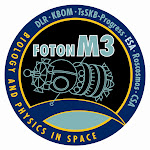At last, the first results from the TARDIS experiment have been published! Thank you all for waiting patiently during the analysing and publishing process! Many of you have probably read already about the results in news media, and I apologize for being so late with updating my blog. The main reason has been a very heavy work load from answering questions from media all over the world. Fun but time consuming.
YES, indeed many of the tardigrades survived the trip in space, and a few of them became the first animals to return alive after exposure to both space vacuum and solar radiation.
To recall our report in Current Biology, the space vacuum and cosmic radiation did not affect their survival or reproduction at all. This was true for both Richtersius coronifer and Milnesium tardigradum. What this means is that these animals can either protect their cells from expected damage of the extremely dehydration impact of space vacuum, or that they can repair damage that arise in some way. At the moment, we don’t know which is true.
Some of the samples were exposed to solar light (UV-radiation) in addition to space vacuum and cosmic radiation, and we used two different optical filters to discriminate between the combined effect of UV-A and UV-B (280-400 nm), on one hand, and effects of the full spectrum of UV, including also UV-C and Vacuum-UV (116-400 nm). Obviously, UV-radiation is difficult to handle also for tardigrades, since few animals survived these exposures.
But one of the species, Milnesium tardigradum, did better than the other, and about 12 % of those exposed to UV-A and UV-B managed to recover, although their egg production was lower than in the control animals that stayed on Earth. Also a few specimens exposed to the full UV range woke up and tried to get their bodies in shape again, but failed and died a few days later.
As almost always in science, our experiment gives rise to more questions than answers. How could these animals stand the extreme dehydration by space vacuum (at a pressure in the range of 0.00001 Pa compared to 100 000 Pa on Earth)? How could some of the tardigrades survive a dose of UV-A and UV-B of over 7000 kJ/sqm and still produce offspring? What molecular mechanisms are behind these remarkable achievements? To what extent do different wavelength of UV radiation penetrate the tardigrade cuticle? Why did one of the species better than the other? Etc, etc.....
A lot of laboratory work are now waiting to be done in order to reveal the secrets of the physiology of tardigrades. I hope that the work with sequencing of the tardigrade genome will start soon, because it will be of great help.
I am of course amazed by the results from our study. But perhaps I am even more amazed by the interest in our project from the public . Most scientific reports don't make it to the front pages of newspapers and web-sites for science news. Most reports never reach the public at all. Tardigrades are definitely special, not only in their physiology, but also in the way they catch the attention of people. Is it perhaps the contrast between the great biological achievements by these animals and the tiny body they have? Or the challenging of traditional concepts of life, for instance that "life depends on water", "life is a continuous process"? Whatever the reason, I hope that tardigrades will continue to inspire people, and make them interested in the world of biological diversity and evolution.
Monday, September 29, 2008
Subscribe to:
Posts (Atom)

